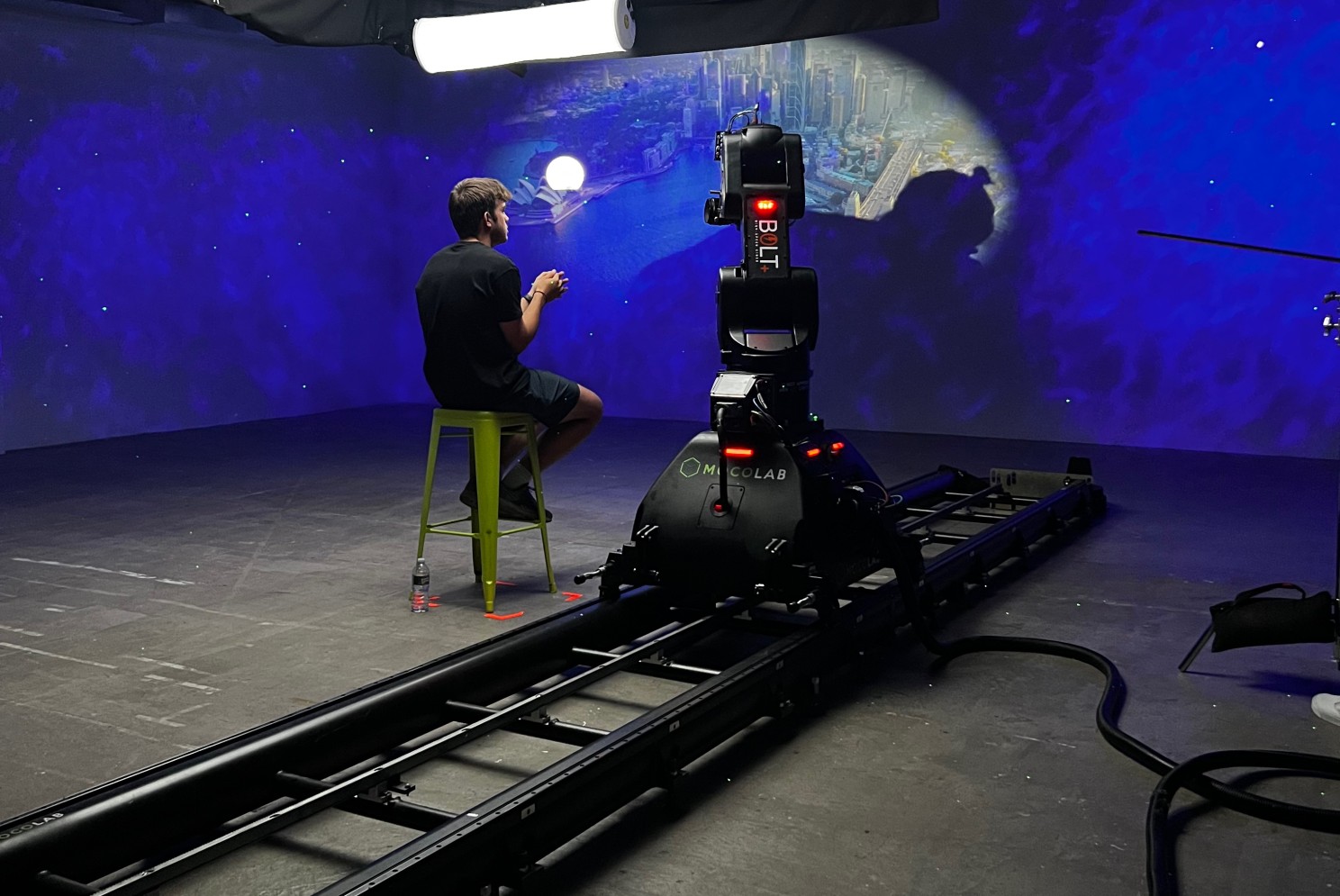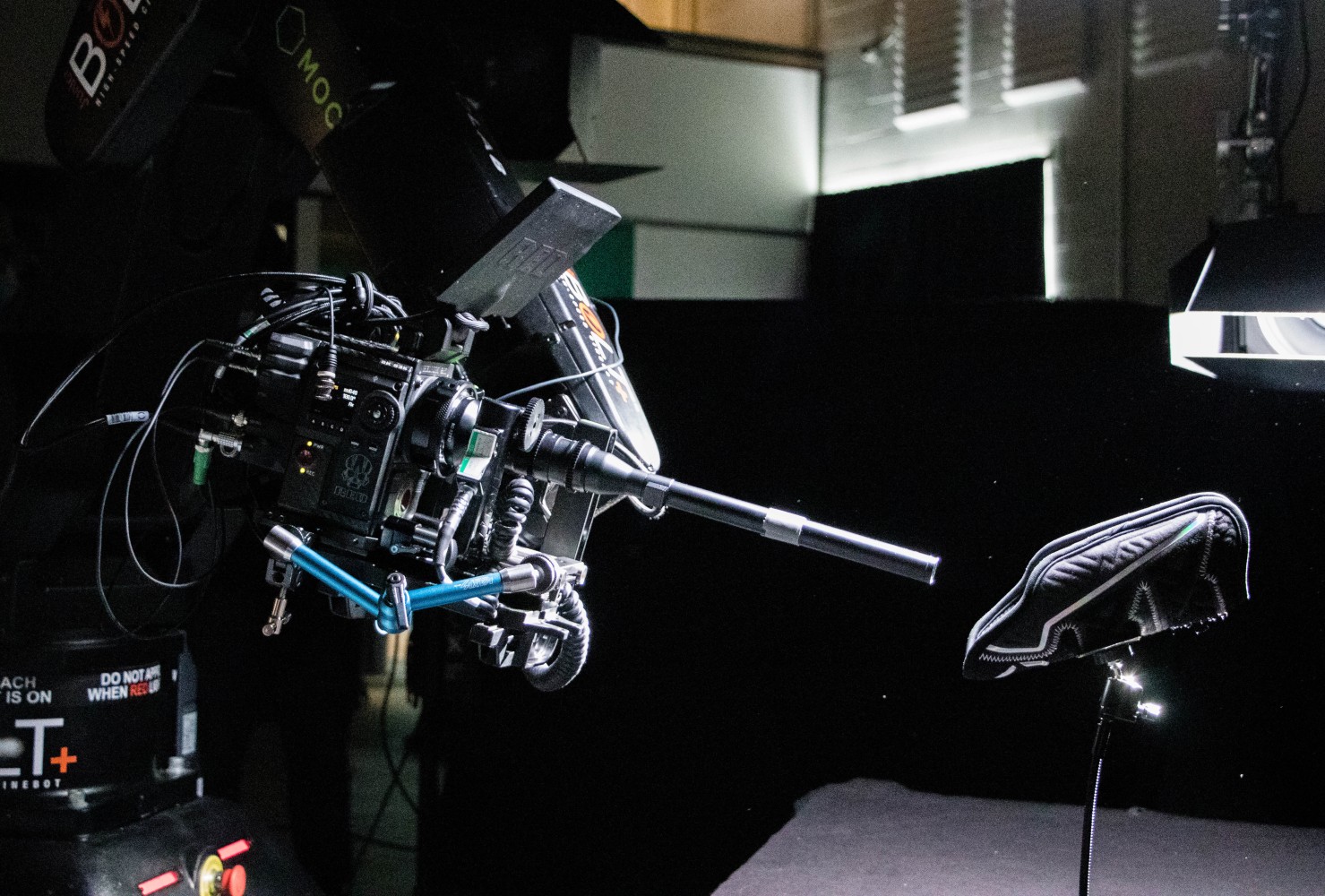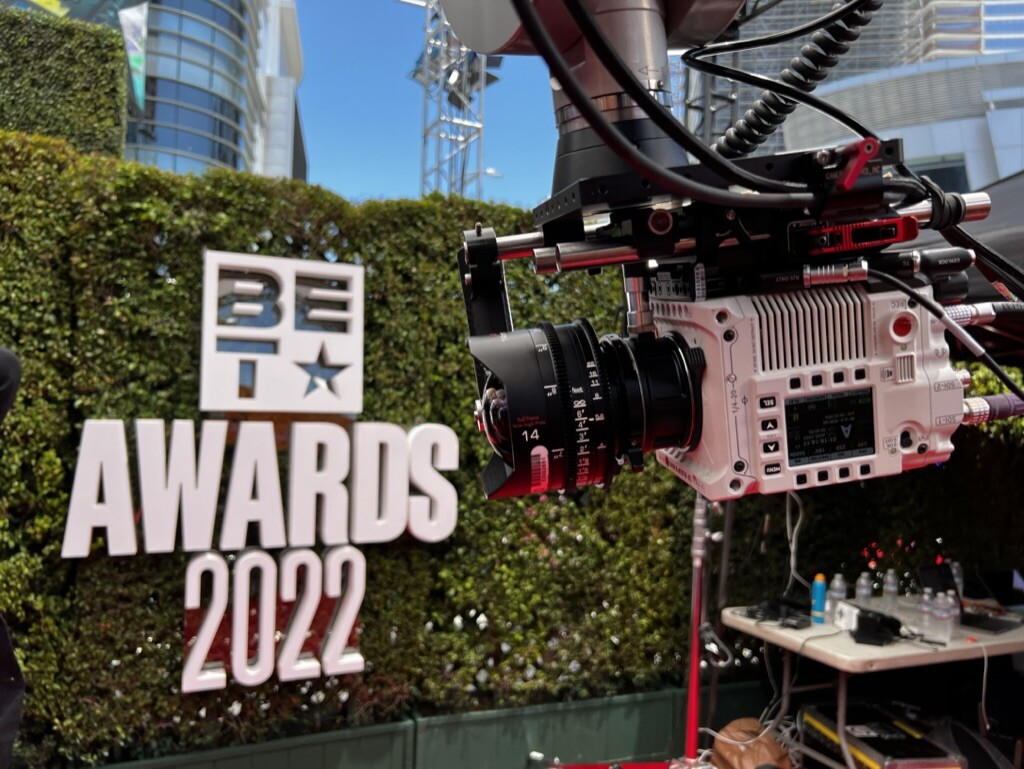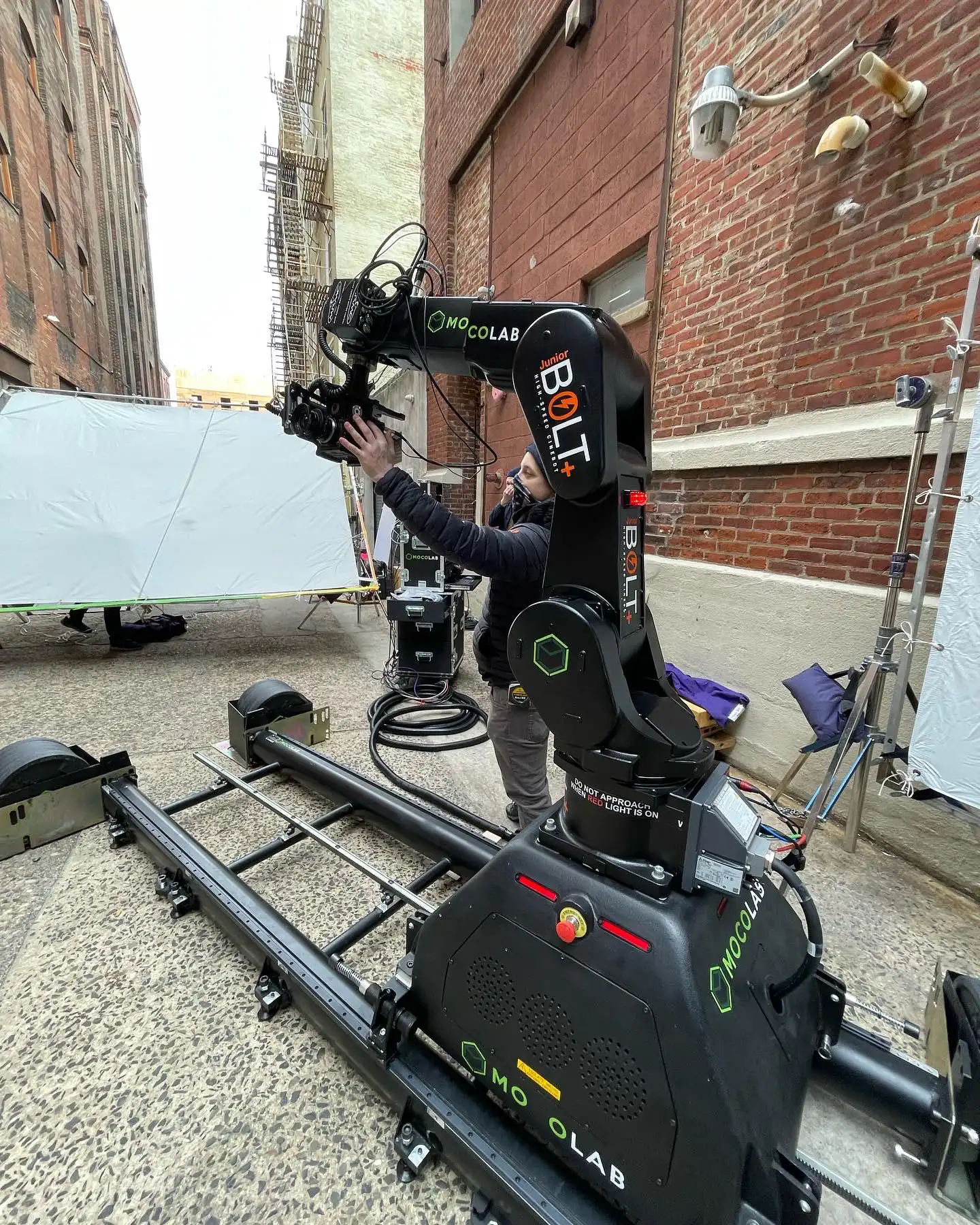Papi Cuisine x Mocolab
:30, 3x :15 + Stills
Case Studies
And how to avoid them
And how to avoid them
At Mocolab we understand that using motion control robotics can be a game-changer in the filmmaking industry, and we're enthusiastic partners for filmmakers in their pursuit of otherwise impossible shots.
Our MRMC Bolt Jr+ robot is a powerful tool that allows filmmakers to achieve precise, repeatable camera movements, opening up a world of creative possibilities once reserved for Hollywood. But like any tool or technique there’s many aspects to consider to bring your vision to life.
It’s tempting to think a cool camera move will bring a shot to life. But, it’s only one piece of the storytelling puzzle the needs to integrate with production design, blocking and styling.
A whizzing orbital camera move around a static object falls flat visually. It makes a good end card, and that’s about it.
There’s thousands of options that elevate a good camera move, and it’s pivotal to consider how the objects + people in frame are interacting. When conceptualizing your shots remember the Bolt is a tool to enhance, not replace, creativity.

Programming the robot takes time. The more aware you are of the moves want to make, the faster your operator will have them ready.
Sending an animatic before a pre-pro call is the gold standard. At a minimum plan to have detailed boards describing the moves.
Attempting to ‘wing-it’ is playing with fire. Sometimes, it works great, and we all riff together creating moves on the fly, other times you waste valuable time spinning your wheels.
A request like "make something cool” is COMPLETELY subjective.
“Make a 2.5 second, 3 point move that orbits 45 degrees counterclockwise before dolly-zooming straight back” leaves no confusion.
Properly timing out each shot (in that handy animatic) ensures smooth transitions and precise movements hitting the right point at the right moment- and within the time available.
You never want to reach the edit only to realize the spots are too long or too short, and retiming a long sequence of moves can be like watching paint dry.
This applies primarily to commercials and music videos, with or without a robot, but nailing it in advance informs the programming process.
That cool move we just programmed, might not be a good fit for the brand. Just because the robot can do the move, and filmmakers think it’s rad, doesn’t guarantee creative directors feel the same way.
We’ll shoot a take you like for directors cut, and a safe option for the client.

We offer 1/2 rate on equipment for program days for a reason– the prep/program time incredibly valuable to the process and triples the amount of hours allocated to shooting. This day allows you to get your sea legs with the rig, and address any issues that arise without compromising because of a lack of time.
Combining the program day with a pre-light day is a great combination. But, holding the robot still for long periods to light the scene diminishes the time available to us to map out your shots.
For this reason, we advocate bringing a second camera body for lighting. The DP can leave it where it's needed to light while we map out other shots, neither unit missing a productive moment.
Inside a 3D package, a camera has no physical limits, it can accelerate and stop instantly, and the mass can reverse directions without camera shake. In After Effects you have incredibly detailed control over the Bézier curves.
Introducing real world hardware complicates these tasks. Importing a camera move from Maya requires finesse, and sometimes compromise. Our team will work with your VFX team in pre-pro to import and test moves in advance.
The robots moves are defined in splines, with each waypoint (keyframe) determining the shape over the move across multiple points, without simple handles to define it’s movement.
The Bolt is capable of much more than just camera moves. Your first instinct is to move like a jib, but through Flair (the robot’s software) advanced motion control features are at your disposal. Techniques like:
Repeat passes to create VFX plates, duplicate an actor, or change the scene but match the camera move.
Triggering other devices on command. Through the triggers Box - The robot can trigger external devices, like liquid jets, pouring rigs, catapults and pyrotechnics.
Mixed frame rate moves. Shoot one pass at 24fps, and another at 240fps and the robot will move 10x faster on the 240fps pass such that the shots can be composited with some objects moving in slow motion, and others at normal speed.

Scaling of miniature objects
And so much more. We're happy to talk you through it anytime. Book an intro call with Mocolab today.
From time to time we’ll see a treatment that calls for dialogue. It’s important to consider the robot makes noise when it moves- especially the track axis. If you’re capturing dialogue, you can ADR it, or time dialogue between rapid moves. At slow speeds, the arm is generally quiet.
The robot uses a series of measured offsets calculate where it is, and where it's looking. This is called target tracking, and by default is defined by focus distance, and target tracking keeps the subject in focus at all times.
Using quality lenses that tape out well is incredibly helpful. Introducing diopters, or poor quality lenses slows this process.
We can work around a diopter or poor lens but it'll slow the programming process. In some instances it’s wise to hand focus control back to the 1st AC. Handing focus control to the AC allow also works great for adding drifting and rack focus effects.

By being aware of these common mistakes and properly integrating the Bolt motion control rig into your filmmaking workflows, you can harness its full potential and achieve exceptional results. At Mocolab, we are committed to helping you make the most of this cutting-edge technology and bringing your creative visions to life with precision and finesse.
Mocolab is an Expressway Cinema Rentals company specializing services and rentals for camera motion control, high-speed and tabletop production. We have a Mark Roberts Motion Control (MRMC) Bolt Jr+ with 30 feet of track, and a Phantom Veo 4k, capable of 1000fps at 4k. We're based in Philadelphia and Upstate NY, serving PA, NY, NJ, DE, MD.
